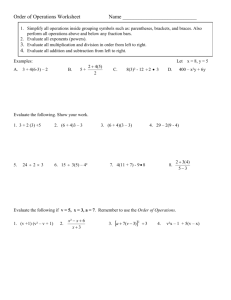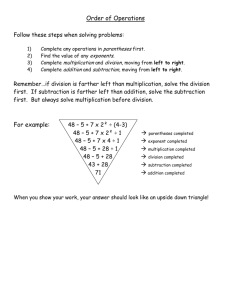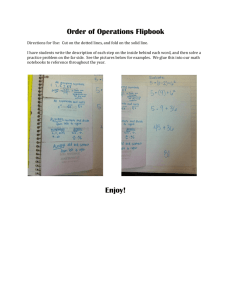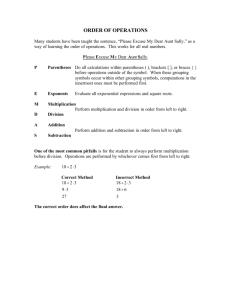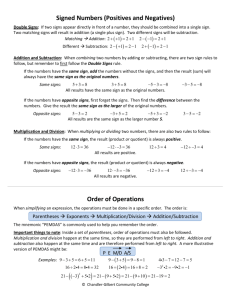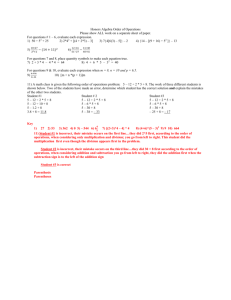The order of operations is a set of rules that all mathematicians use
advertisement
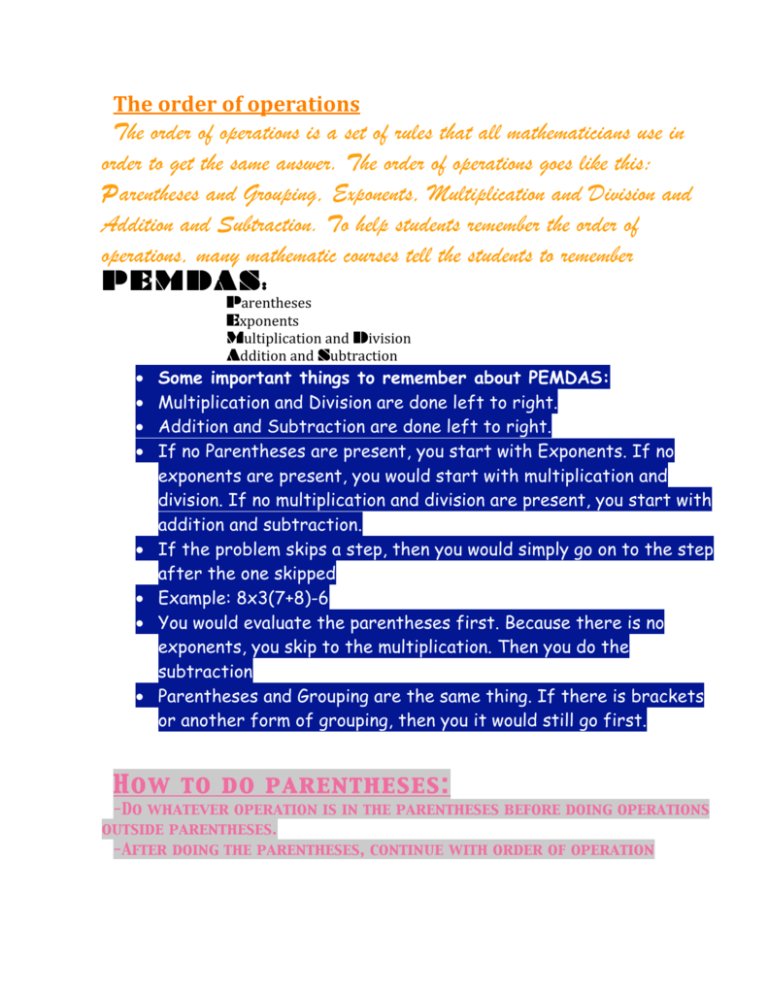
The order of operations The order of operations is a set of rules that all mathematicians use in order to get the same answer. The order of operations goes like this: Parentheses and Grouping, Exponents, Multiplication and Division and Addition and Subtraction. To help students remember the order of operations, many mathematic courses tell the students to remember PEMDAS : • • • • • • • • Parentheses Exponents Multiplication and Division Addition and Subtraction Some important things to remember about PEMDAS: Multiplication and Division are done left to right. Addition and Subtraction are done left to right. If no Parentheses are present, you start with Exponents. If no exponents are present, you would start with multiplication and division. If no multiplication and division are present, you start with addition and subtraction. If the problem skips a step, then you would simply go on to the step after the one skipped Example: 8x3(7+8)-6 You would evaluate the parentheses first. Because there is no exponents, you skip to the multiplication. Then you do the subtraction Parentheses and Grouping are the same thing. If there is brackets or another form of grouping, then you it would still go first. How to do parentheses: -Do whatever operation is in the parentheses before doing operations outside parentheses. -After doing the parentheses, continue with order of operation How to evaluate an exponent: An important thing to remember about Powers: -The smaller number is called an exponent. -A Power is a way of writing repeated multiplication. For example, 34 is actually 3x3x3x3. Its just quicker. How to actually evaluate it: Example: If it says 43, write down two fours, like this: 4 4 4 -Then put a multiplication sign between the three fours, like this: 4x4x4. -Multiply the three numbers. -Exponent answer: 64 -You have then evaluated the Exponent Multiplication and Division -Do all multiplication and division symbols left to right Addition and Subtraction: -Do all addition and subtraction symbols left to right. Practice Problems Test yourself by using these problems to make sure you understand the concepts taught in this lesson. For problems 1, 3, and 4, figure out what N equals. For problem 4, do as the directions say. 1. 16÷(32-1)= 2. A package of paper costs $4.00. For every ten packages of paper that you buy, you receive a discount of $11.00. Write and evaluate an expression to find the cost of buying 66 packages of paper. 3. 6+7x4= 4. 36 ÷3x23= To find the length of a show, use the expression p+2i, where p is the length in minutes, of the play and I is the length, in minutes, of each intermission. If the play is 130 minutes long and the intermissions take 15 minutes each, how long is the show? ---for more practice problems, see text book starting page 17. Answers 1. 2 2. $198 3.34 4. 96 5. 160 minutes long

